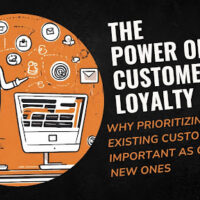The buyer’s journey is never as simple as going from point A to point B. There are a lot of pit stops, twists, turns, doubts, and backtracking. Customer relationship management (CRM) allows you to track, record, and utilize customer interactions with websites, social media, customer service, and more.
What Is A CRM?
We know that CRM tracks customer interactions with your brand, but what is it?
It’s a technology that sorts, holds, and compares all your brand’s interactions with an individual, whether they’re already a customer or a potential customer. It’s an excellent tool for tracking customer loyalty and discovering ways to improve and grow your business.
CRM is a powerful tool that’s useful in different ways. We often mistake it for a one-stop-shop for analytics, but did you know that there are three major types of CRM?
3 Types of CRMs
1. Collaborative CRM (CCRM)
This type of CRM brings people together, literally. Collaborative or strategic, CRM is used for communication between teams handling different aspects of the customer experience. Sales, marketing, customer service, technical support, vendors, and distributors use CCRM to collect, organize, and share customer information across platforms and departments.
CCRM helps an organization thrive and saves on time otherwise spent lost in translation. Think about all the ways these departments interact with customer data. You might need to know a customer’s purchasing history, marketing preferences, or how often they’ve contacted customer support. These are aspects of the customer experience. It’s crucial to utilize each to build customer loyalty and retention.
2. Analytical CRM (ACRM)
Unlike CCRM, this type is indirect with customers, collecting data analytics about customers and their interactions to provide insight into their wants and needs. ACRM pays more attention to each step of the customer journey than other types of CRM and reveals patterns in the data. Any department in your organization can utilize this data to help them empathize with customers and find the best marketing strategy for key demographics.
ACRMs often come with features that help you understand the types of data collected, so nothing goes to waste. Analytics tell a story about customer behavior. With that data, you can understand what the customer did or didn’t want in the interaction. ACRM can lead to better and more successful sales strategies, increased customer retention, and reveal common customer issues. Every department benefits from such insight and can help an organization grow with better business decision-making and planning for the future.
3. Operational CRM (OCRM)
This last type is where it all comes together. OCRM deals with customer satisfaction, directly focusing on keeping a customer happy through direct interactions online and offline. A few examples of OCRM include:
- Call centers that take customer complaints and questions;
- Websites that act as 24 hours sales and service professionals for your business; and
- Blogs that entertain as well as teach.
Each one helps resolve conflict, generate positive interactions, and boosts satisfaction.
OCRM can help you with many issues like high service costs or high customer turnover. It focuses on improving and automating the service side of customer interactions. For marketing, OCRM can help generate new leads and result in higher sales success. By automating the process of sending out targeted ads, tracking the progress, and analyzing the data, you can have a more efficient campaign at a lower cost. One way is automating the process of contacting customers and cutting down on manual data entry with a variety of OCRM technologies. Save time and frustration with automated call receiving services that reroute a customer who called the wrong department or handle an inquiry with inputs.
Add A CRM To Your Marketing Today
No matter what combination of CRM is chosen for your business, we’re here to help. Contact Farmboy to save time, build strategies, and understand your customers better.






Leave a Reply